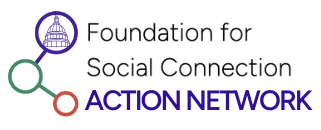If you’re feeling burned out, you’re not alone. According to a survey by Indeed, over half of respondents experienced burnout in 2021. This is an alarming number when you consider the toll that burnout takes on health and wellbeing.
The World Health Organization recognizes these impacts and has added burnout to their international classification of diseases as an “occupational phenomenon,” with this definition:
Burnout is a syndrome resulting from chronic workplace stress that has not been successfully managed. It is characterized by three dimensions:
1) feelings of energy depletion or exhaustion
2) increased mental distance from one’s job, or feelings of negativism or cynicism related to one’s job, and
3) reduced professional efficacy.
When people experience burnout, they often turn to stress management practices or consider looking for a less stressful job as solutions. These approaches can help, but most people overlook an important strategy: building relationships with colleagues.
Did you know that liking and feeling connected to co-workers is the number one reason people choose to stay at their jobs AND the top predictor of job satisfaction?!
Think back over your own career. Have you had jobs where you felt close with your co-workers? Or where you experienced a sense of belonging and community? If so, how did you feel about those jobs compared to ones where you felt disconnected from colleagues? My guess is that it made a huge difference and the data backs this up.
Research by Gallup shows that having a best friend at work leads to a sevenfold increase in engagement! And lonely employees are five times more likely to miss work due to stress.
It’s time to change the mindset that socializing at work eats into productivity and recognize that positive work relationships are crucial to employee well-being and the bottom line.
Connection won’t solve everything—to create a truly healthy and sustainable work environment, the specific problems contributing to burnout must be addressed. Common causes include unmanageable workload, unclear or ever-changing expectations, inequities, inability to turn off, and not feeling valued.
However, working to address these issues is better accomplished in a group or collective, and camaraderie with our colleagues can help us get through challenging circumstances in the meantime.
Developing work relationships doesn’t always happen spontaneously. Rather than leaving it up to individual employees to forge their own connections—which can take months or even years—consider creating opportunities that facilitate meaningful interaction.
Gallup’s research shows that having someone at work who cares about you as a person is one of the top predictors of job satisfaction and engagement. Think about ways to move beyond transactional, role-based interactions and instead help colleagues get to know each other as human beings.
To do this well, it’s essential to build in time and provide a structure that encourages connection. (Hint: social events that involve unstructured mingling, such as after work drinks or holiday gatherings, can be extremely uncomfortable for introverts and may even undermine a sense of belonging and inclusion.)
At ProjectConnect, we’ve created a framework that facilitates genuine connection. We lead small groups of 6-8 employees through a 6-session program that helps them get to know each other by engaging in a series of conversation prompts and activities. In addition to running groups, we also train employees to become certified ProjectConnect Facilitators to lead groups within their workplace.
If you prefer to do it yourself, consider ways to implement the 6 Essential Strategies for Creating Connection. The more of these strategies you implement, the more successful your connection efforts are likely to be.
1. Small. Small group interactions of 4-8 people give employees the opportunity to get to know one another. Large events can generate positive energy, but rarely facilitate the type of interpersonal interactions that create friendship.
2. Structured. Structured activity and a clear focus ease the anxiety of gatherings where employees are expected to mingle or network freestyle. This is especially true for employees who identify as introverts.
3. Sustained over time. Exposure leads to familiarity, which (often) leads to liking, which leads to forming friendships. One-time, quarterly, or even monthly events don’t allow employees to get comfortable with each other.
4. Shared experiences. Finding things in common (shared values, identities, interests, etc.) is one of the fastest ways to strike up conversation and build relationships.
5. Self-disclosure. Creating openings for employees to talk about themselves, the things they care about, and who they are outside of work speeds up the process of getting to know each other and facilitates empathy and closeness.
6. Safe. Trust is the foundation of healthy connection. Psychological safety creates an atmosphere that allows employees to be themselves by valuing their experiences, voice, and perspectives. Rather than avoiding conflict, it creates a safe foundation from which to engage in difficult conversations without fear of rejection or punishment.
Best wishes connecting! If you would like a copy of the 6 Essential Strategies for Creating Connection Worksheet or a 5-Step Burnout Recovery Plan, you can download them here.
Jessica Gifford is the Founder and Chief Connection Officer at ProjectConnect.

